[Shenzhen, China, June 30, 2023] On June 30, the Green Network Summit themed "Empowering a greener future with intelligent and green sites" was kicked off during the International Digital Energy Expo 2023 in Shenzhen. Industry stakeholders gathered and discussed green network development trends, successful practices, and virtual power plants (VPPs). The attendees include representatives from Global System for Mobile Communications Association (GSMA), China Mobile Design Institute, China Telecom Research Institute, China Unicom Research Institute, Turkcell, Shenzhen Power Supply Bureau, China Tower, and Huawei Digital Power.
He Bo, President of Data Center Facility & Critical Power Product Line, Huawei Digital Power, delivered a speech. He said that green ICT transformation has become a consensus in the industry. Huawei has launched low-carbon energy target network and next-generation data center solutions to lead the development of green sites and green data centers, enabling each watt to power more bits and computing power, helping carriers transition toward carbon neutrality.
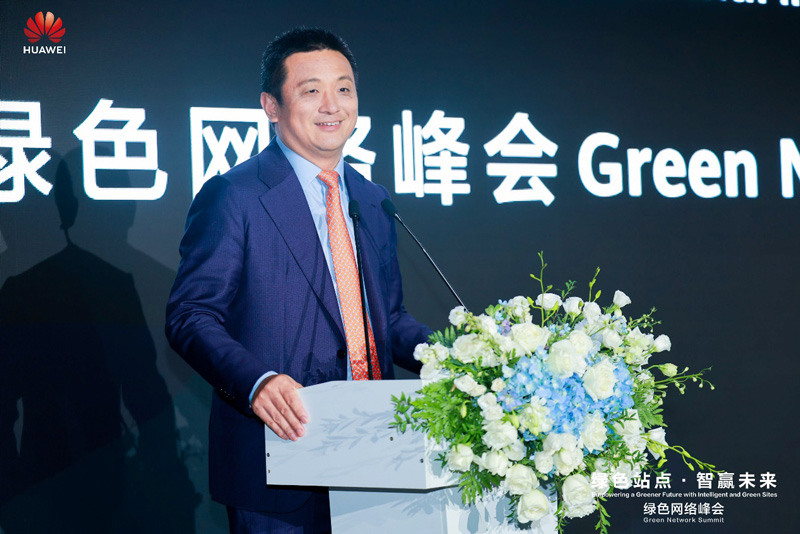 He Bo, President of Data Center Facility & Critical Power Product Line, Huawei Digital Power
He Bo, President of Data Center Facility & Critical Power Product Line, Huawei Digital Power
Global Telecom Carriers Accelerate to Build Green Networks
According to GSMA's statistics, the total number of global cellular connections has reached about 11.1 billion by the first quarter of 2023, a year-on-year increase of 5.83%. The number of mobile user connections has reached about 5.5 billion, a year-on-year increase of 2.78%. At the event, Emanuel Kolta, GSMA's lead analyst, said that the number of global cellular connections and mobile data traffic would continue to grow between 2022 and 2027. Therefore, improving energy efficiency is particularly important for the sustainable development of carriers' networks. He pointed out that energy efficiency could be improved by simplifying site structure, using integrated network devices and advanced passive cooling technology, and increasing the proportion of renewable energy.
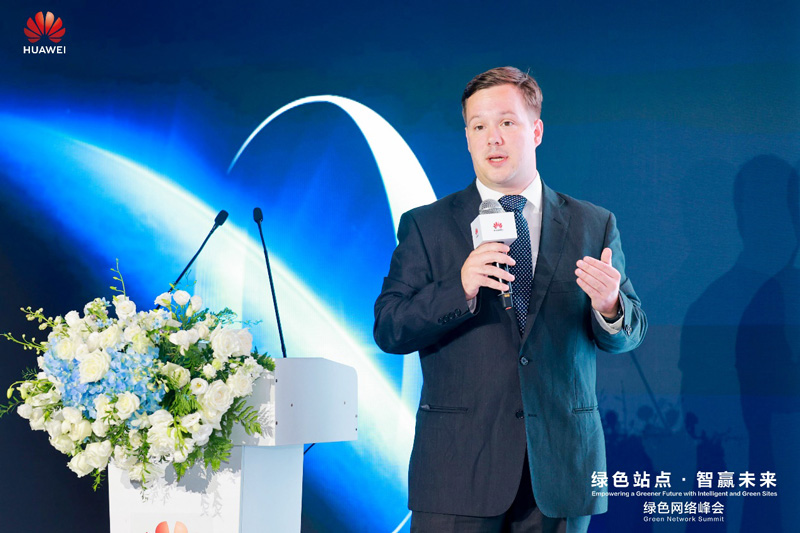 Emanuel Kolta, Lead Analyst of Network Sustainability and Innovation, GSMA Intelligence
Emanuel Kolta, Lead Analyst of Network Sustainability and Innovation, GSMA Intelligence
China Mobile launched its green development mode. The carrier strives to achieve energy saving and emission reduction by building green base stations, green data centers, green supply chains, and green ecosystems. From 2020 to 2025, China Mobile aims to reduce the comprehensive energy consumption of telecom services by no less than 20%, and to save more than 40 billion kWh of electricity. Li Yusheng, Deputy Director of Information Energy Institute, China Mobile Group Institute, presented the theories and methodologies for China Mobile to cut carbon footprints of communication networks. On the load side, China Mobile has deeply integrated energy and information flows to promote the green and low-carbon transformation of communications networks. On the source side, it leverages information technologies to help power enterprises save energy and reduce carbon emissions.
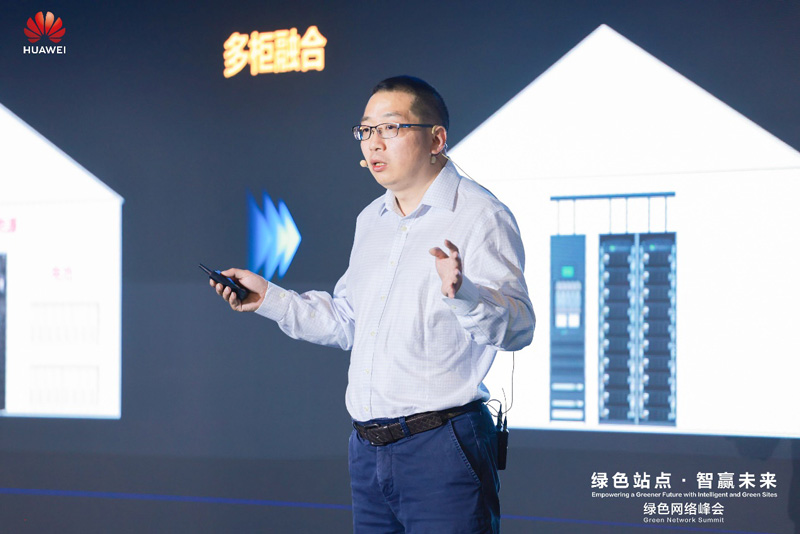 Li Yusheng, Deputy Director of Information Energy Institute, China Mobile Group Institute
Li Yusheng, Deputy Director of Information Energy Institute, China Mobile Group Institute
Shi Ying, Director of Green & Low Carbon Technology R&D Department, China Telecom Research Institute, said that green network development is the key for carriers to realizing carbon neutrality. China Telecom keeps implementing its green development strategy by using digital means and continuously enabling green transformation of different sectors. In its roadmap to abate carbon emissions, China Telecom proposed the concept of cloud-network synergy and built a secure and green information infrastructure. Additionally, it has been playing an active part in confronting the global climate crisis. It is worth mentioning that China Telecom has built a green big data center in Qinghai, which features an extremely low PUE (less than 1.2) by adopting 100% traceable green power.
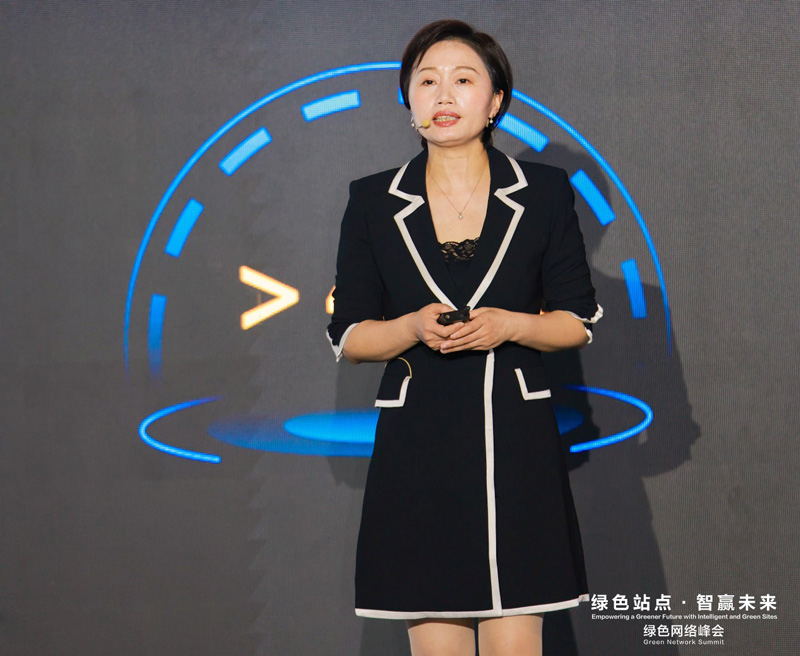 Shi Ying, Director of Green & Low Carbon Technology R&D Department, China Telecom Research Institute
Shi Ying, Director of Green & Low Carbon Technology R&D Department, China Telecom Research Institute
China Unicom focuses on five directions: low-carbon operation of mobile base stations, green and low-carbon data centers, reconstruction of green and low-carbon communications equipment rooms, network simplification and optimization, and smart energy management platform. Liu Zhenghai, a senior engineer of China Unicom Research Institute, said that China Unicom has shifted its focus from reducing absolute energy consumption to improving energy efficiency and optimizing energy mix, with the aims to enabling digital transformation in other industries and achieving the dual-carbon goals for the whole society. To this end, China Unicom adopts methods such as green network construction, green energy consumption, and intelligent collaborative management.
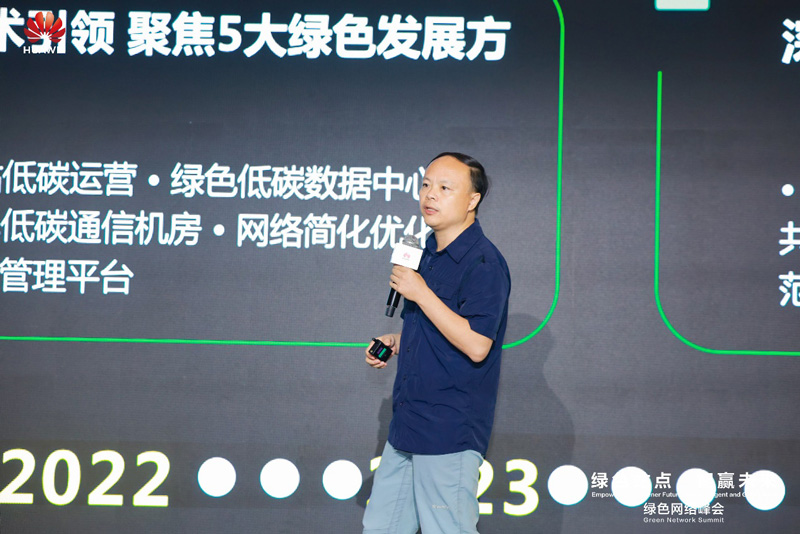 Liu Zhenghai, Senior Engineer of China Unicom Research Institute
Liu Zhenghai, Senior Engineer of China Unicom Research Institute
As the largest telecom carrier in Türkiye, Turkcell plans to source 100% clean energy by 2030 and achieve carbon neutrality by 2050. Yıldıray Örnekli, Associate Director of Turkcell's Access Network and Infrastructure, shared the Turkcell's green site practice at the summit. He said that the ICT industry is facing an unprecedented opportunity to lead energy transition and reach net zero. Carriers and suppliers are making long-term commitments to climate action in order to take advantage of future opportunities and mitigate negative impacts. He said that Turkcell has incorporated sustainable development strategies into its business model, transforming natural resources into social and economic values.
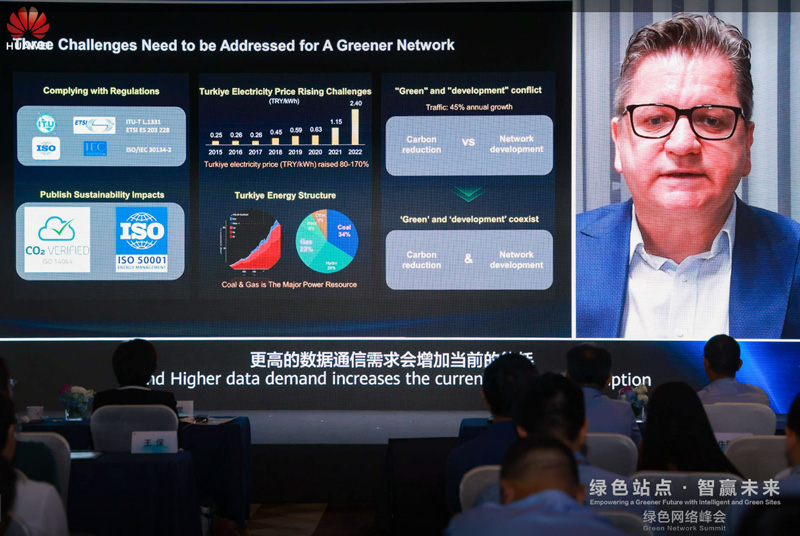 Yıldıray Örnekli, Associate Director of Access Network and Infrastructure, Turkcell
Yıldıray Örnekli, Associate Director of Access Network and Infrastructure, Turkcell
From Energy Consumers to Producers
To achieve carbon neutrality, building a new power system sourcing mainly from renewable energy has become a consensus. As electrification deepens, both the power generation side and the power consumption side have higher requirements on power grid scheduling. Against this backdrop, building green and low-carbon VPPs is a must. VPPs require the load and energy storage resources from different parties. The energy infrastructure on ICT networks is endowed with such resources. How to facilitate the integration of ICT assets with VPPs with new technologies and business models is a hot topic in this event.
Guo Yuhui, Deputy General Manager of China Tower Guangdong Branch, said China Tower Guangdong endeavored to connecting its energy storage resources to VPPs. The company found that small- and medium-sized C&I ESSs need unified planning and platform support to develop distributed storage energy and VPPs as the focal point.
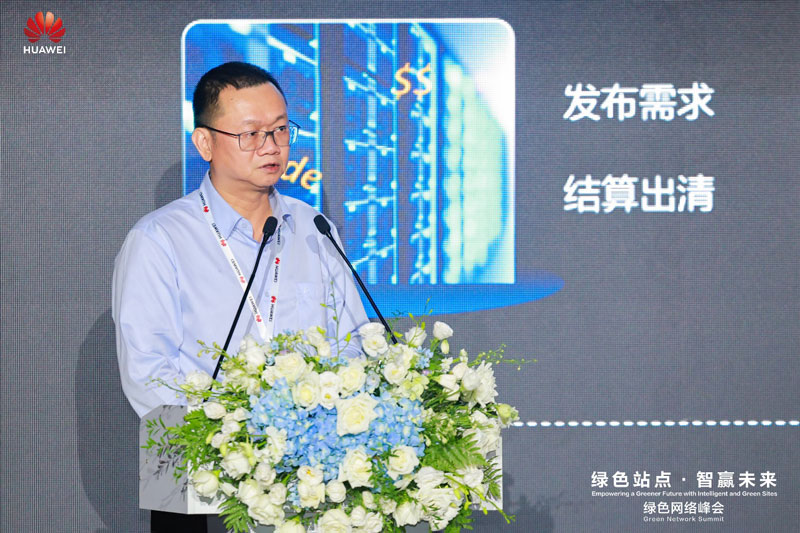 Guo Yuhui, Deputy General Manager of China Tower Guangdong Branch
Guo Yuhui, Deputy General Manager of China Tower Guangdong Branch
Yao Quan, President of Site Power Facility Domain of Huawei Digital Power, delivered a keynote speech. He said that Huawei provides smart energy solutions to help carriers transform from energy consumers to energy producers and enablers. As energy consumers, carriers can make full use of site, equipment room, and data center resources to deploy PV modules for energy production. In addition, they can utilize abundant energy storage devices to join in energy scheduling of the power system, maximizing site values and achieving green ICT transformation and role shift.
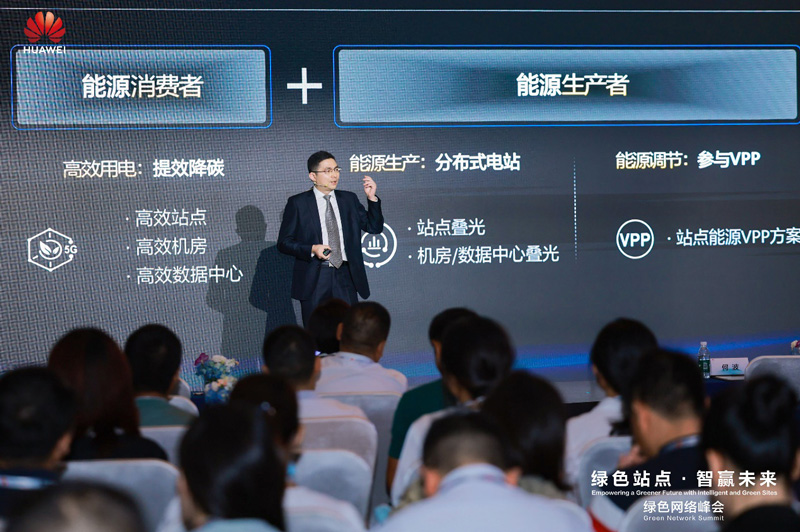 Yao Quan, President of Site Power Facility Domain of Huawei Digital Power
Yao Quan, President of Site Power Facility Domain of Huawei Digital Power
In the field of VPP application, Shenzhen is at the forefront in China. The city plans to build VPPs with 1 million kW adjustable capabilities by 2025 to effectively support the construction of a new power system for a greener city. At the Green Network Summit, Cheng Renli, General Manager of Shenzhen Virtual Power Plant Management Center, Shenzhen Power Supply Co., Ltd., said that VPPs could not be built without technological support, production relationship adjustment, and market mechanism innovation, a trio leveraging policy guidance, professional advantages of power grids, and social capitals. The government leads the production relationship and market mechanism response. The power grid undertakes the responsibility of secure and stable power supply. Related enterprises continuously develop new technologies to facilitate the integration of load-side resources.
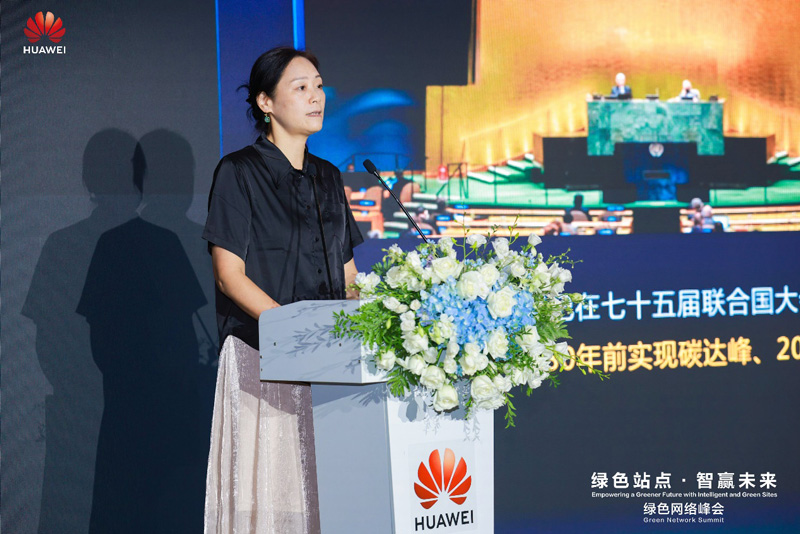 Cheng Renli, General Manager of Shenzhen Virtual Power Plant Management Center, Shenzhen Power Supply Co., Ltd.
Cheng Renli, General Manager of Shenzhen Virtual Power Plant Management Center, Shenzhen Power Supply Co., Ltd.
Roundtable discussion on green network development (a special episode of Dr. Fang's Carbon Talk)
During the roundtable discussion of the Green Network Summit held by Dr. Fang's Carbon Talk, Fang Liangzhou (Vice President and CMO of Huawei Digital Power), Li Yusheng, Liu Zhenghai, Cheng Renli, and Li Shaolong (Vice President of Huawei Digital Power Site Power Facility Domain) shared their thoughts about site PV deployment, ESS deployment, and VPP application.
At the end of the discussion, they concluded that in addition to improving site energy efficiency, raising the proportion of renewable energy is an important way for green network development. Looking ahead, network energy supply will go green by PV deployment at sites, equipment rooms, and data centers. Meanwhile, a large number of energy storage resources on the live communications network can be utilized to implement peak shaving and VPP integration.
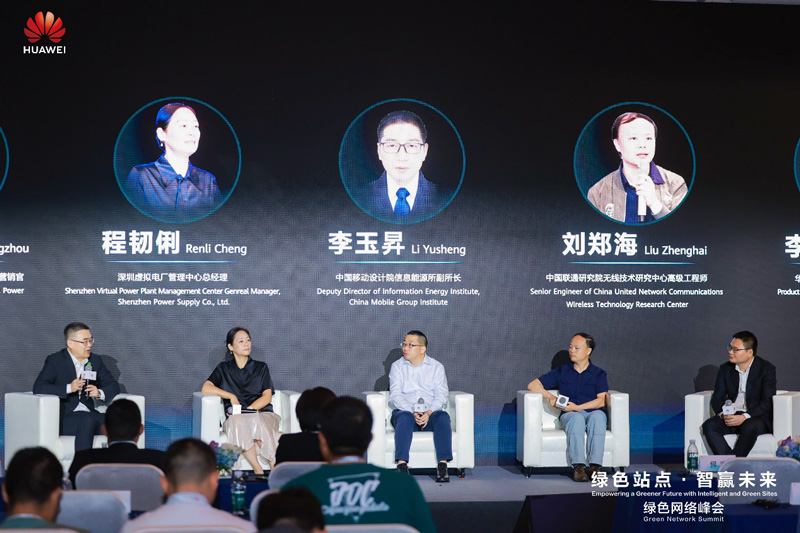 Roundtable Discussion
Roundtable Discussion
In the summary speech, Shang Jing, Director of China Carrier Green Site Solution Sales Dept, Huawei Technologies, said that Huawei will continue to leverage its edges in digital and power electronics technologies and closely cooperate with global carriers, tower companies, and industry partners to promote green network development.
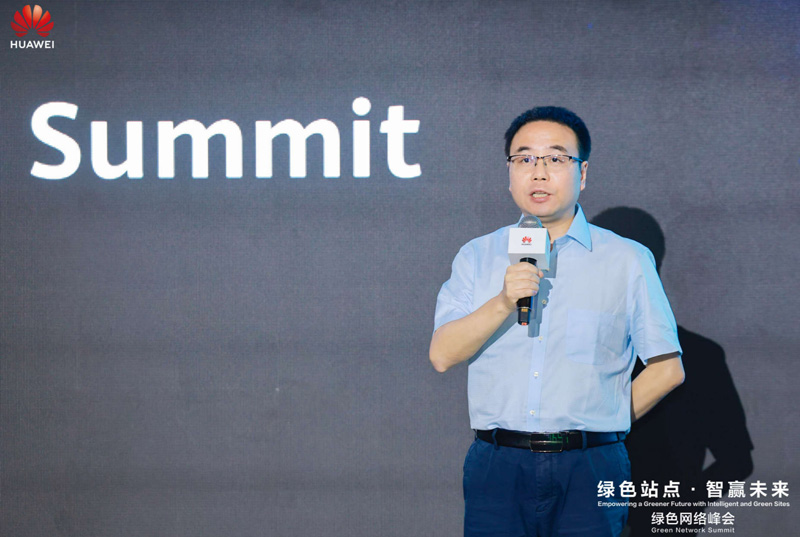 Shang Jing, Director of China Carrier Green Site Solution Sales Dept, Huawei Technologies
Shang Jing, Director of China Carrier Green Site Solution Sales Dept, Huawei Technologies
The Green Network Summit has been successfully closed. However, the green transformation of ICT networks will continue.

 Search
Search




 Search
Search


